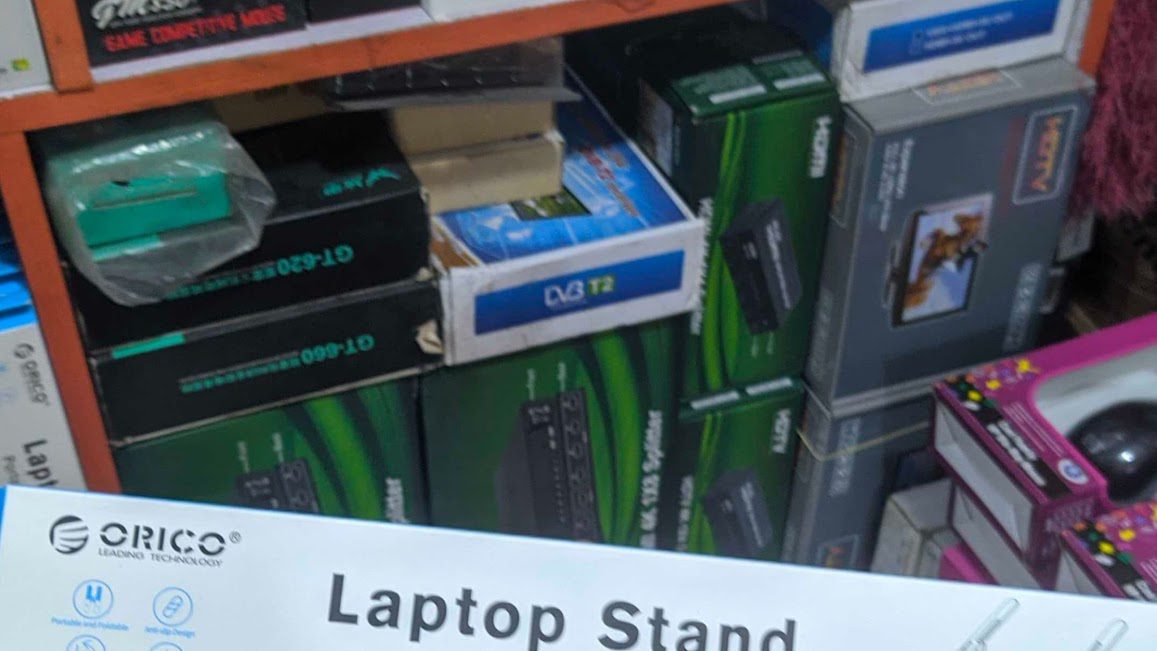Scaling Your Retail Computer Accessories Business
The world of retail computer accessories is dynamic and ever-evolving. Most challenges entrepreneurs face in business are how to scale business. Most retail businesses do not grow past their local customer base.
As an entrepreneur in this industry, scaling your business is not only a strategic move but a necessity for long-term success.
Let’s explore the essential steps and strategies to scale your retail computer accessories business effectively.
1. How ready is your business for scaling?
This is the first question to ask yourself as a retail computer accessories business owner.
Jumping into scaling or expanding your business without properly accessing how ready your business is, is a recipe for disaster. You might end up doing yourself more harm than good in the long run.
1.1. You can access if your business is ready for scaling in the following ways.
- Accessing your financial stability. Check if you are financially stable to handle expansion.
- Check if you can handle the risks that come with expansion. Analysis of every risk possible and how to mitigate them
- Check if there’s enough market demand for the products you want to sell in your locality, that is worth the expansion.
- Check if you can hire more staff because you will need more staff to run your business effectively.
- Check if you can get a new store within or outside your current location or just diversify your product range.
2. Doing Market Research
2.1. Analyzing Market Trends and Consumer Preferences
As a retailer, you deal directly with consumers. Staying ahead of the curve starts with understanding market trends and consumer preferences. Keep an eye on emerging technologies and product categories.
Conduct surveys or gather feedback from your existing customers to identify what they value most in computer accessories.
Take advantage of social media to know what is trending in the industry and check out big e-commerce stores to know their best sellers.
2.2. Identifying Niche Markets and Target Demographics
As a retailer, you already have a niche in computer accessories you focus on. Try to explore untapped segments within the computer accessories market and tailor your products to meet the specific needs and preferences of these segments.
Identifying those untapped niches and targeting those that fall within the demographics will add more customers to your already customer base.
2.3. Competitor Analysis
Study your competitors meticulously. Analyze their product offerings, pricing strategies, and marketing tactics. This analysis can provide valuable insights into gaps in the market and opportunities for differentiation.
3. Scaling Strategies For Retail Computer Accessories Business
3.1. E-commerce Expansion
In today’s digital age, an online presence is non-negotiable. Create a user-friendly and visually appealing e-commerce website to showcase your products and facilitate online sales.
Utilize established e-commerce platforms like Shopify or WordPress WooCommerce to streamline your online operations. These platforms offer a range of tools for inventory management and customer engagement. I highly recommend building your website on WordPress.
3.2. Inventory Management
Efficient Stock Tracking and Ordering: Implement real-time inventory management software to track stock levels. Use predictive analytics to anticipate demand and optimize your ordering process.
Implementing Just-in-Time Inventory: Minimize storage costs and maximize efficiency by adopting a just-in-time inventory approach. This ensures you have the right products on hand without excess stock.
You need to build a strong relationship with your local supplier to utilise this approach. Also, make sure your supplier can deliver consistently and fast.
This is one of the benefits you will get if I’m your supplier.
3.3. Marketing and Branding
Digital Marketing Campaigns: Invest in digital marketing to reach a wider audience. This includes Google ads, social media advertising, and email marketing to engage with your customers effectively. I recommend you start with social media or Google ads, they are the most effective.
Building a Strong Brand Presence: Develop a unique brand identity that resonates with your target audience. A strong brand presence not only attracts customers but also fosters loyalty.
If you don’t have good social media profiles or you just don’t take it seriously, it will be wise to invest in it.
It’s one of the major ways of building a strong brand presence. Hire a social media manager to handle all your social media profiles and focus more on marketing.
3.4. Customer Service and Support
Enhancing Customer Experience: Provide exceptional customer service to differentiate your business. Respond promptly to inquiries, resolve issues, and gather customer feedback for continuous improvement. Improve your support if you are already lacking in it.
Good customer service enhances good customer experience and you are more likely to get a referral from that customer.
4. Financial Planning
4.1. Budgeting for Scaling Efforts
Create a detailed budget that accounts for the costs associated with scaling, including marketing expenses, e-commerce platform fees, and additional staffing if necessary.
4.2. Securing Funding or Investment
Considering the kind of country you are located you might seek funding or investment to fuel your scaling efforts. Whether it’s through loans, investors, or crowdfunding, having adequate financial resources is crucial for expansion.
If you are in Nigeria getting a loan to scale your business might not be a good idea.
4.3. Managing Cash Flow Effectively
Maintaining a healthy cash flow is vital. Monitor your finances regularly and implement strategies to manage cash flow effectively, such as offering flexible payment terms to suppliers.
5. Operational Efficiency
5.1. Streamlining Business Processes
Identify inefficiencies in your current operations and streamline processes. Automation tools can help automate repetitive tasks, reducing the need for manual intervention.
5.2. Implementing Automation Tools
Automation tools like inventory management software, email marketing automation, and chatbots can significantly improve efficiency, allowing you to focus on strategic growth.
Accounting software like Sage and Quickbooks will help with your accounting. Invoicing software also speeds up the process of manually writing an invoice and also avoids the mistake of miscalculation in the manual invoice.
5.3. Optimizing Supply Chain Management
Collaborate closely with suppliers to optimize your supply chain. Negotiate favourable terms and explore partnerships that can reduce lead times and costs. It will be best if you add more local wholesale suppliers to the ones you have already.
6. Scaling Challenges and Solutions
Scaling your business may come with challenges such as increased competition, supply chain disruptions, or staffing issues. It’s crucial to identify these hurdles in advance.
Develop contingency plans and strategies to overcome challenges as they arise. Building resilience into your business model can help you navigate unexpected obstacles.
As they say, prepare for the worst but hope for the best. There will always be challenges in business always be prepared for them.
7. Sustainability and Growth
7.1. Maintaining Long-Term Growth
Scaling is not just about expansion, it’s also about sustainability. Consider the long-term impact of your actions on the environment, society, and your brand reputation.
7.2. Future Outlook for the Computer Accessories Market
Stay informed about the future trends and developments in the computer accessories market. Being adaptable and forward-thinking will position your business for continued growth.







